NIT WIT NEWZ
(Nit Wit Newz is an unauthorized, often unreliable, on-line news source designed to keep Manor residents abreast of the inconsequential, trifling, and superficial events that dramatically shape and inform our everyday lives at Rogue Valley Manor)
MANOR MAN FOUND SEMI-CONSCIENCE IN FRONT OF OWN COTTAGE
Responding to distressed Life Alert alarm, Manor Security rushes to village site of recently-arrived Manor resident.
Experience difficulties reaching suspected victim. Front lawn area recently converted into labyrinth of mature six-foot high cannabis plants.
Dense maize stalls rescue efforts. Dead-ends abound in thicket.
Mercy Flight chopper called to aid search. Spots victim. Guides on-ground responders to key path leading to center of labyrinth.
Responders find supine victim lying in patch of hallucinogenic mushrooms. Area fawn licking resident’s face. Victim roused. Speaks haltingly.
Claims late-in-life recurring bouts of despondency. Finds solace in labyrinth meditation and mushroom-induced out-of-body experience. Responders suspect overdose likely cause of temporary unconscious spell.
Victim waves off additional help. Re-enters cottage under own unsteady power.
Nit Wit Newz investigative reporter, Sally Forth, at recovery scene. Senses deeper backstory.
Uncovers victim bio info.
Name: Sully Waters. Retired, single male, loner. Born, raised in North Carolina. Vocation: decades-long civilian job at nearby military installation. Avocation: shuffleboard. Three-time state champion in sport. Waters life wrapped up in career and shuffleboard.
Sudden departure of Waters from east coast. Decision followed abrupt severance of long-time employment. Was Water Commissioner at North Carolina Marine Base. Charged with malfeasance. Bitter over dismissal. Despondency follows.
Reporter Forth wheedles interview with reclusive Waters. Reveals to reporter: Sought major change after job discharge. Left east coast. Searched senior communities in west. Tabs Rogue Valley Manor last September: Liked leafy, wooded campus. Liked RVM cottage accommodations with yard to grow serenity-providing, despondency-soothing labyrinth. Manor Summer Game offered opportunity to indulge lifelong competitive passion—shuffleboard.
Shocks soon follows.
Discovered that among thirty events included in Summer Games— no shuffleboard!
Worse. Discovered that though Manor had tennis courts, golf course, croquet court, lawn bowling court, horseshoe pit, pickleball and badminton courts, swimming pool, pool tables, ping pong, bocce ball and a court for corn bag tossing—there was no shuffleboard court at Rogue Valley Manor!
Waters decries, “RVM only senior community in U.S. without a shuffleboard court.”
First, career loss, now, shuffleboard skills scuttled. Despondency morphs into deep despair.
Tells reporter Forth, realization of facing a shuffleboard-less life prompted his retreat to labyrinth and mushroom overdose on day of front yard incident.
Forth, submits Sully Waters plight to authorities.
Rogue Valley Manor administration responds.
Enlists Wellness Department aid.
Waters, eager to move past life of quiet desperation, begins intensive rehab program.
(Readers: fast forward several weeks to present, early November)
Marked improvement evident. Waters despondency wanes.
Credits daily regimen of Zumba dancing, Tai Chi, Pilates, and Aqua Conditioning for improved physical well-being. Competitive spirit re-ignited due to comprehensive instruction in the Corn Bag Toss. (Claims he’ll be serious contender in event at 2023 Summer Games).
Reveals to reporter Forth, major force in his rehabilitation was new-found friend. Shares silent bonding moments in labyrinth each morning with Manor faun.
Tranquility returns to Rogue Valley Manor.
—A. Looney
.


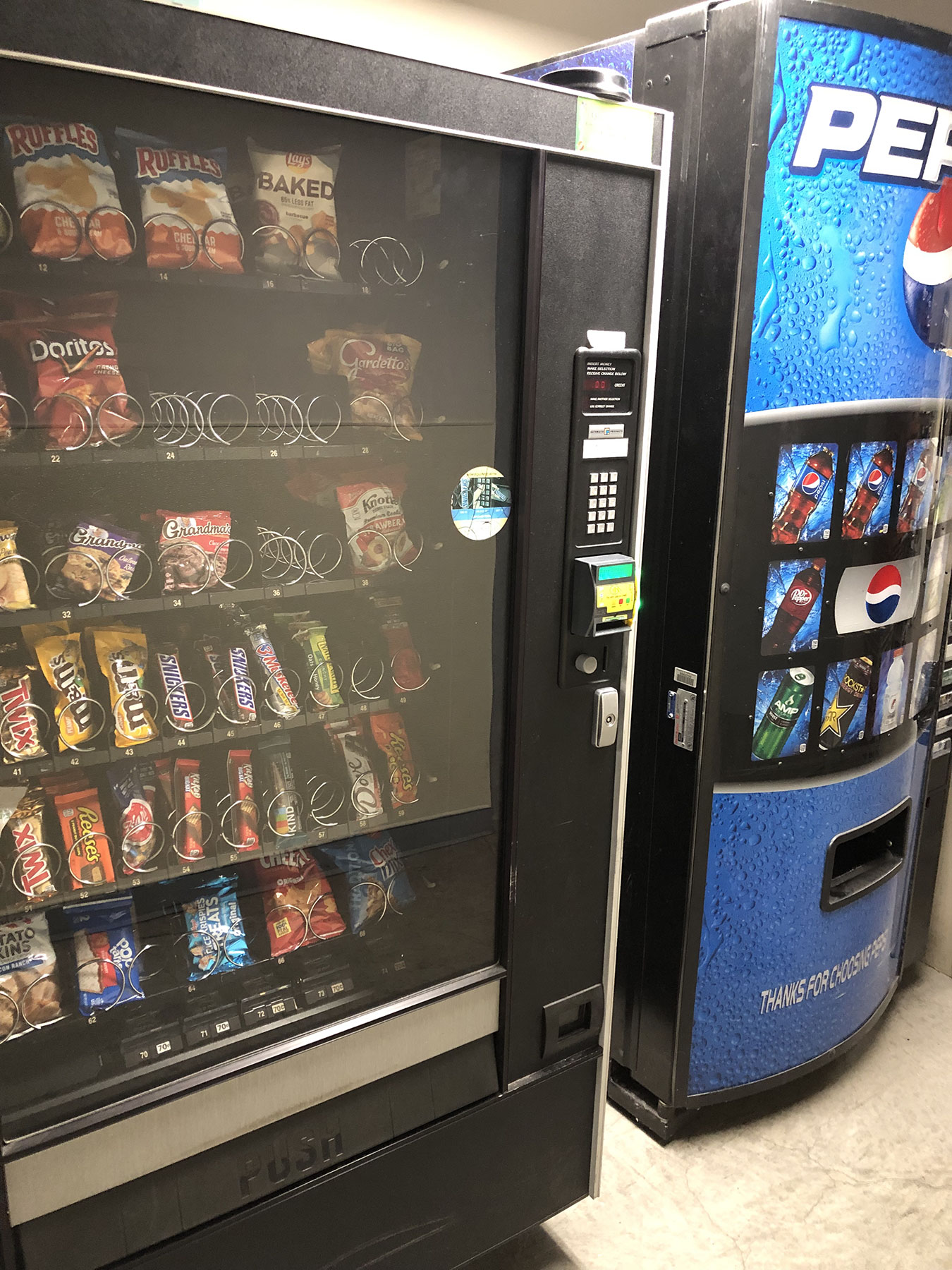
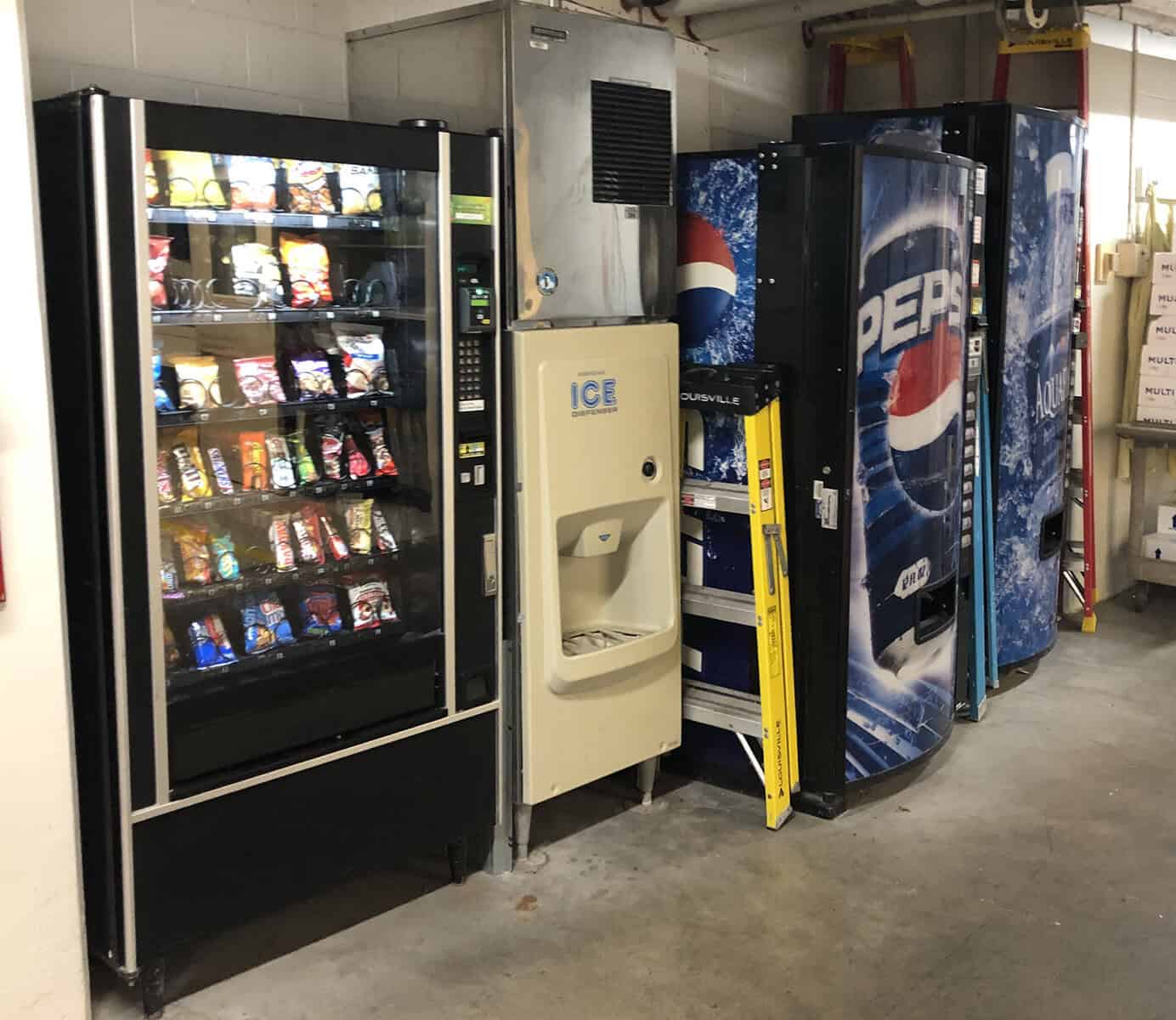 Manor directions: Take the main elevator to the ground floor. Turn left out of the elevator, left again into the hall, and left once more through the double doors at the end of the row of resident mailboxes. Snack, beverage, and ice machines are along the left wall.
Manor directions: Take the main elevator to the ground floor. Turn left out of the elevator, left again into the hall, and left once more through the double doors at the end of the row of resident mailboxes. Snack, beverage, and ice machines are along the left wall. Plaza Directions: Go to the south end of the first floor, then through the unmarked double doors to the left of the Rogue Room entry. The freight elevator will be to your right; take it down one floor. The beverage machine will be visible outside the ground floor elevator door.
Plaza Directions: Go to the south end of the first floor, then through the unmarked double doors to the left of the Rogue Room entry. The freight elevator will be to your right; take it down one floor. The beverage machine will be visible outside the ground floor elevator door.
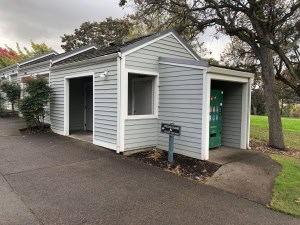
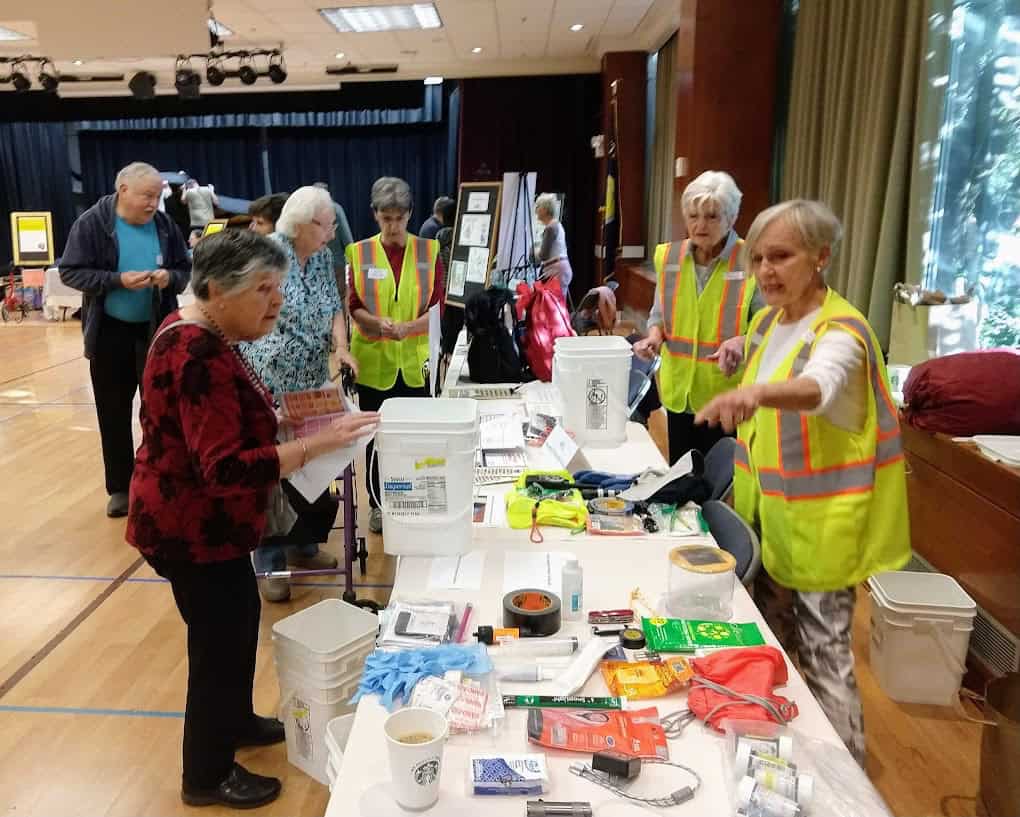 Opportunity Faire was just that — an opportunity to advertise and inform about Preparedness. A team headed by Channing Penna and consisting of Ann Rizzolo, Julie Mahoney, Vicki Gorrell, Margie Berger, and Bob Buddemeier set up displays and organized giveaways and a lottery to attract interest and attention.
Opportunity Faire was just that — an opportunity to advertise and inform about Preparedness. A team headed by Channing Penna and consisting of Ann Rizzolo, Julie Mahoney, Vicki Gorrell, Margie Berger, and Bob Buddemeier set up displays and organized giveaways and a lottery to attract interest and attention.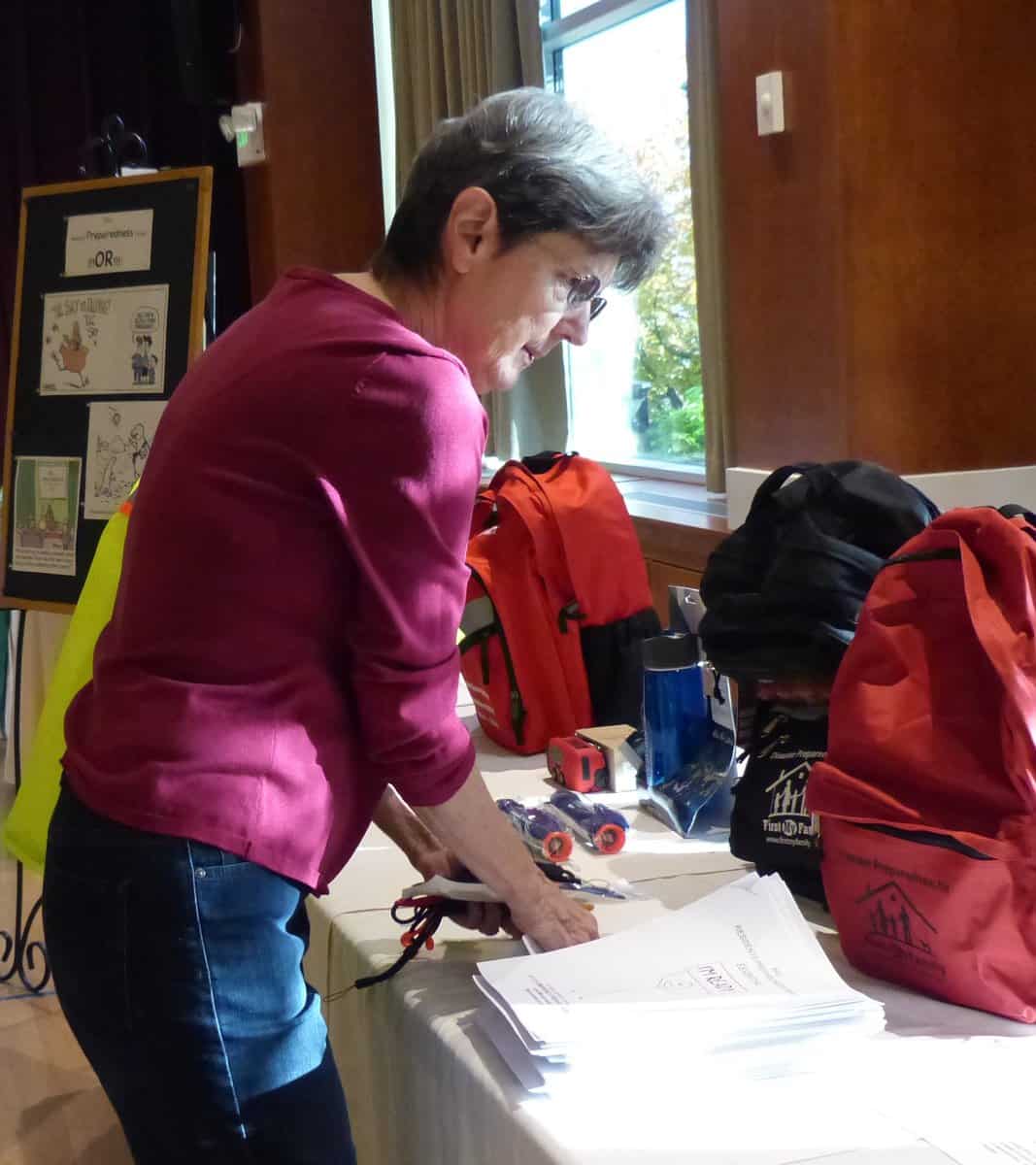 A major draw for the display was the abundance of goodies available — the freebies included the plastic pails, informational bookmarks, and wrist lanyards so that people who need two hands in the dark don’t have to hold their flashlights in their mouths.
A major draw for the display was the abundance of goodies available — the freebies included the plastic pails, informational bookmarks, and wrist lanyards so that people who need two hands in the dark don’t have to hold their flashlights in their mouths.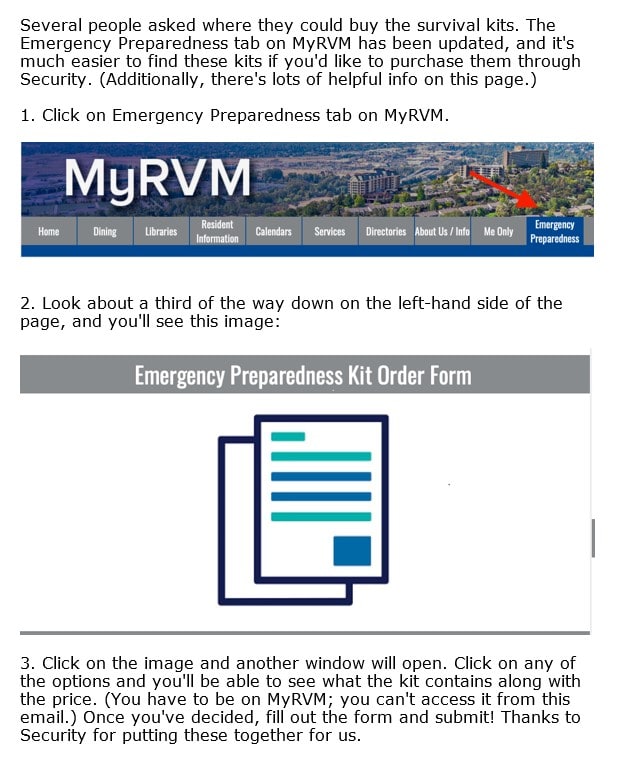 All in all, the RPG team felt that this was a very successful effort, introducing more people to RPG and to preparedness needs and opportunities. The displays were a big help, both in gaining attention and in explanations. One lesson learned was that the amount of material could be a bit overwhelming for novices; we will work on providing more focused displays and explanations in the future.
All in all, the RPG team felt that this was a very successful effort, introducing more people to RPG and to preparedness needs and opportunities. The displays were a big help, both in gaining attention and in explanations. One lesson learned was that the amount of material could be a bit overwhelming for novices; we will work on providing more focused displays and explanations in the future.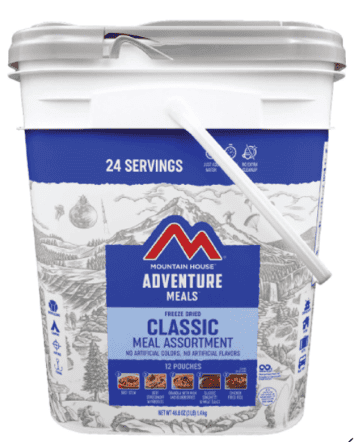
 items not requiring cooking can be eaten over a period of a few days.
items not requiring cooking can be eaten over a period of a few days.